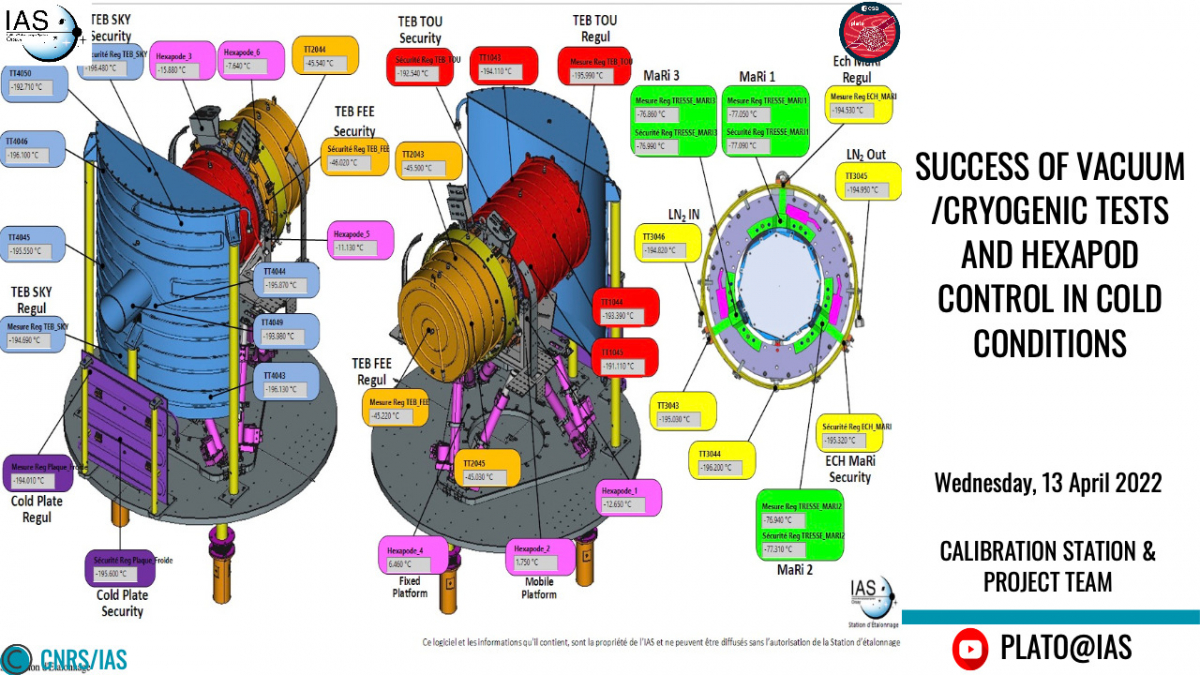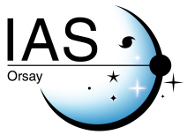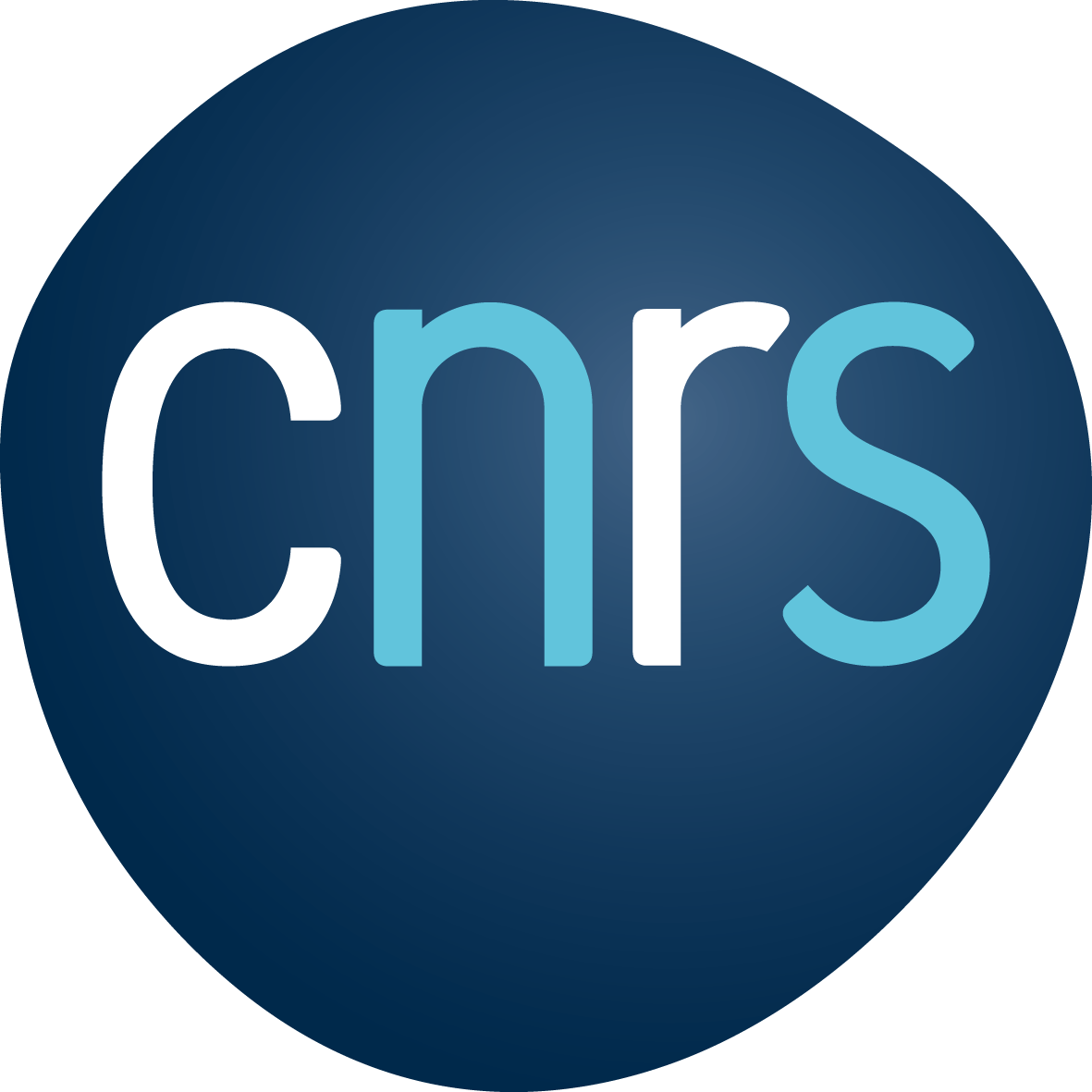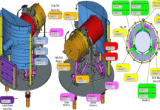Successful validation tests for the PLATO cameras calibration
The PLATO project has reached a new stage in the development at IAS of the calibration structure for the flight cameras. The validation tests of the installations started at the beginning of March, on cryogenic vacuum infrastructures deployed in the Saturn thermal chamber, at the IAS calibration station. All the tests have just been successfully completed.
These tests included the following steps
1. Verification of the correct operation of the command and control system, including the alarms in cryogenic vacuum.
2. Validation of the liquid nitrogen distribution and filling for all thermal shields surrounding the camera. These screens are used to achieve the desired temperature.
3. Optimisation of fluid consumption and control settings to achieve the cryogenic temperature stabilisation needed to address scientific requirements during image acquisition.
4. Validation of the thermal part of the camera control system (EGSE), ensuring in particular the critical function of maintaining the cameras at a minimum survival temperature despite the surrounding low temperature in space.
5. Validation of the movements of the hexapod, which will support the camera, in real temperature and vacuum conditions. The excellent stability and precision performances required for the calibration have already been verified when the tank was open, now their reproducibility will be checked in this new environment.
All of these steps have been fully validated, demonstrating a high level of control and quality of preparation over more than two years of development.
The next steps will notably involve the validation of the calibration automation scripts for image acquisition, and the configuration of the opto-electronic environment. Finally, the conformity of the light beams from the optical bench to the specifications will have to be verified, in order to simulate as well as possible the signal of the stars that will be observed by each camera during the PLATO mission.
The calibration programme and the presentations of the different phases can be followed on the dedicated Youtube channel: PLATO@IAS.
Contacts at IAS: Christian Olivetto, Thierry Appourchaux





